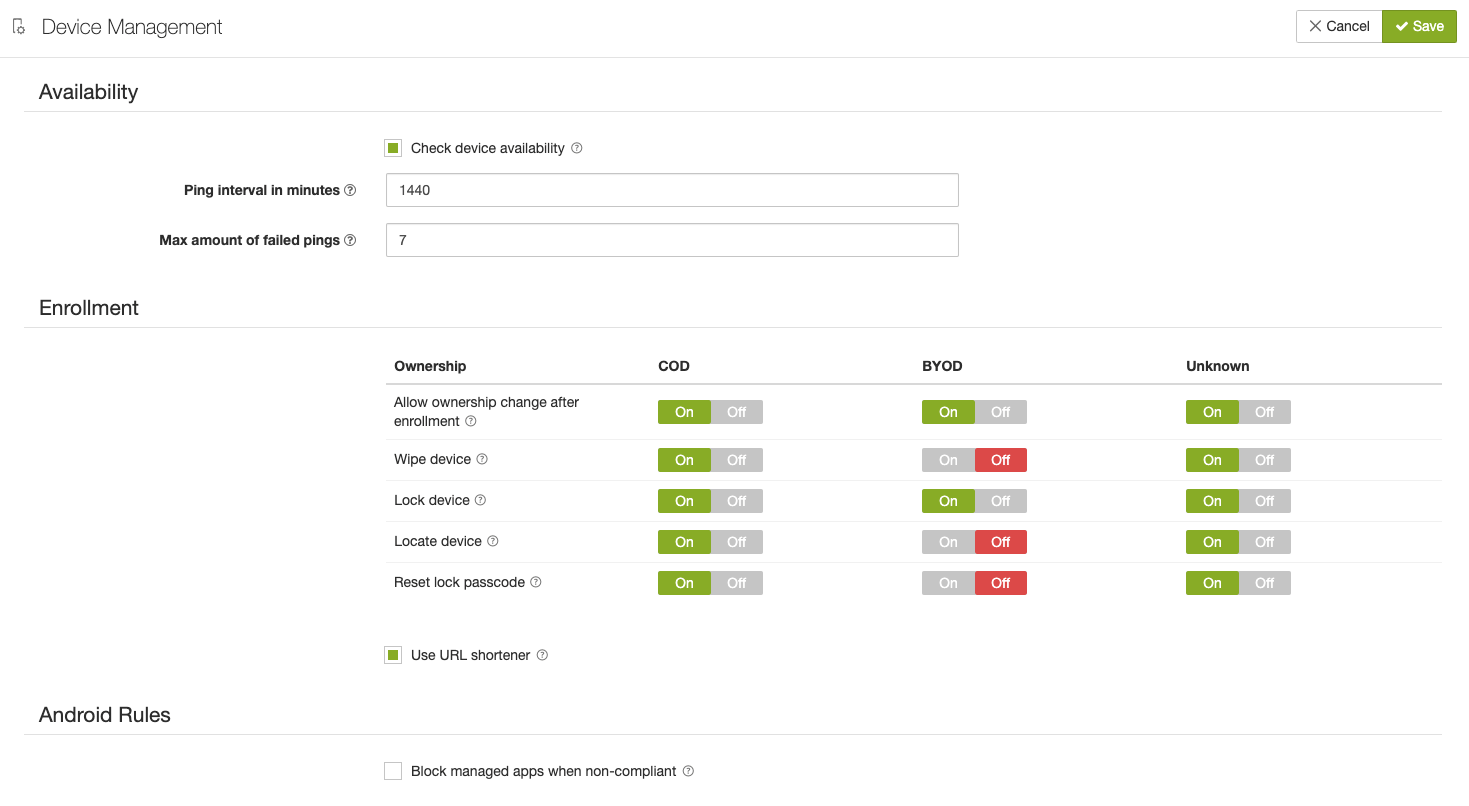Device Management
The device management entry in the Settings menu shows settings for enrolled devices.

Availability
In this section, you can specify whether and when the connection to enrolled devices should be checked by Relution. To check the connectivity so called ping actions are sent. If the devices confirms the reception of these actions, Relution assumes the device has a connection. The first checkbox enables this functionality. The second value "Ping interval in minutes" determines the periodic interval in which the ping actions are sent. Very small intervals can increase the battery consumption of the devices. The third value "Max number of failed pings" defines the maximum number of consecutive unacknowledged ping actions until a device is set to the inactive state.
Enrollment
This part of the Device Management settings defines what a Device Manager is allowed to do with a device, based on the Ownership attribute. There are three Ownership values a device can have: Company owned device (COD), Bring your own device (BYOD) or unknown. The most commonly used use case is, that it should not be possible to perform certain actions such as locking or wiping a device if it is a personal (BYOD) device. Additionally the ownership change after enrollment should be disabled in this case.
Finally, you can disable the URL shortener, which is an external service to shorten the enrollment links, which are very long by default.
